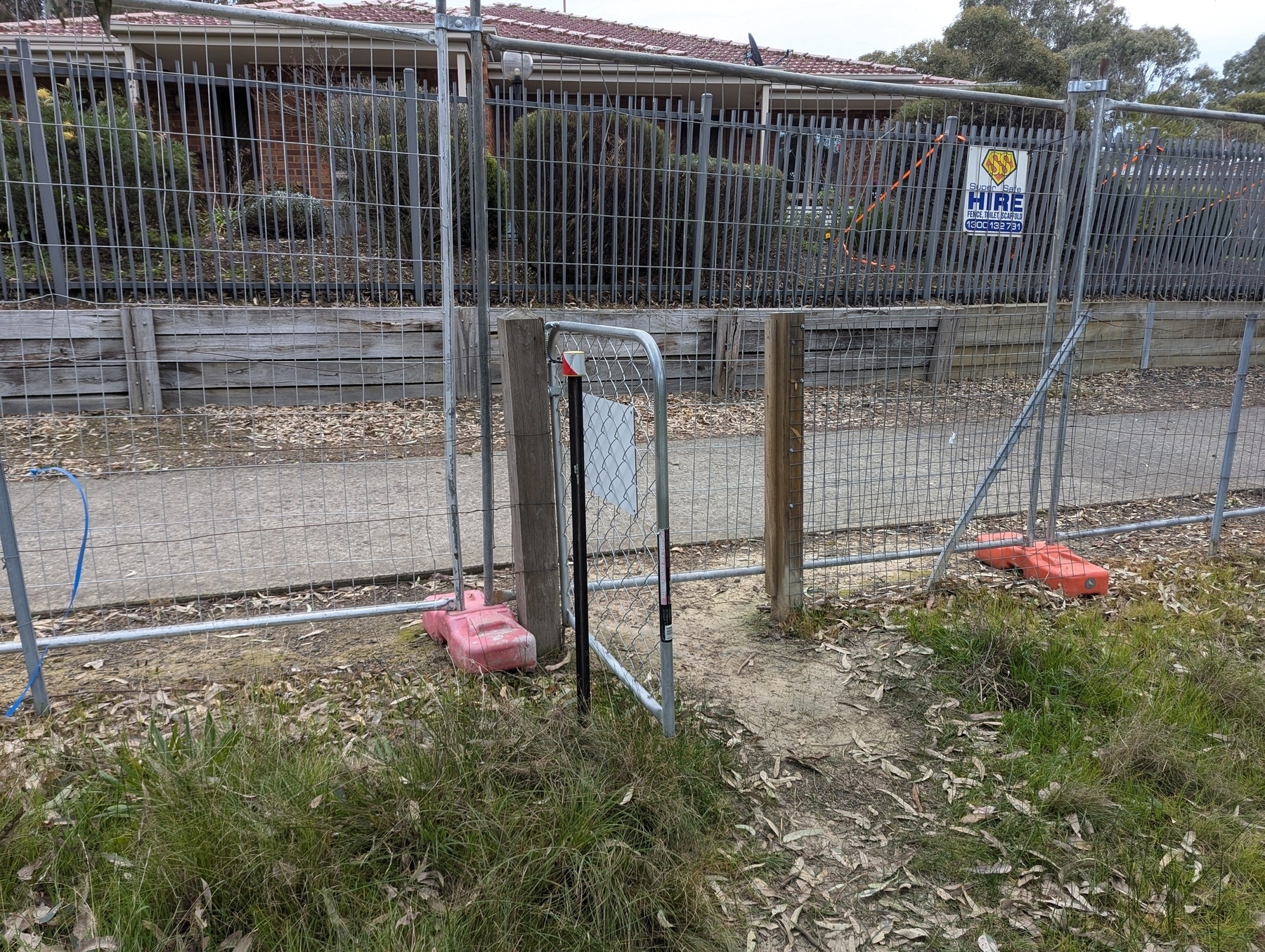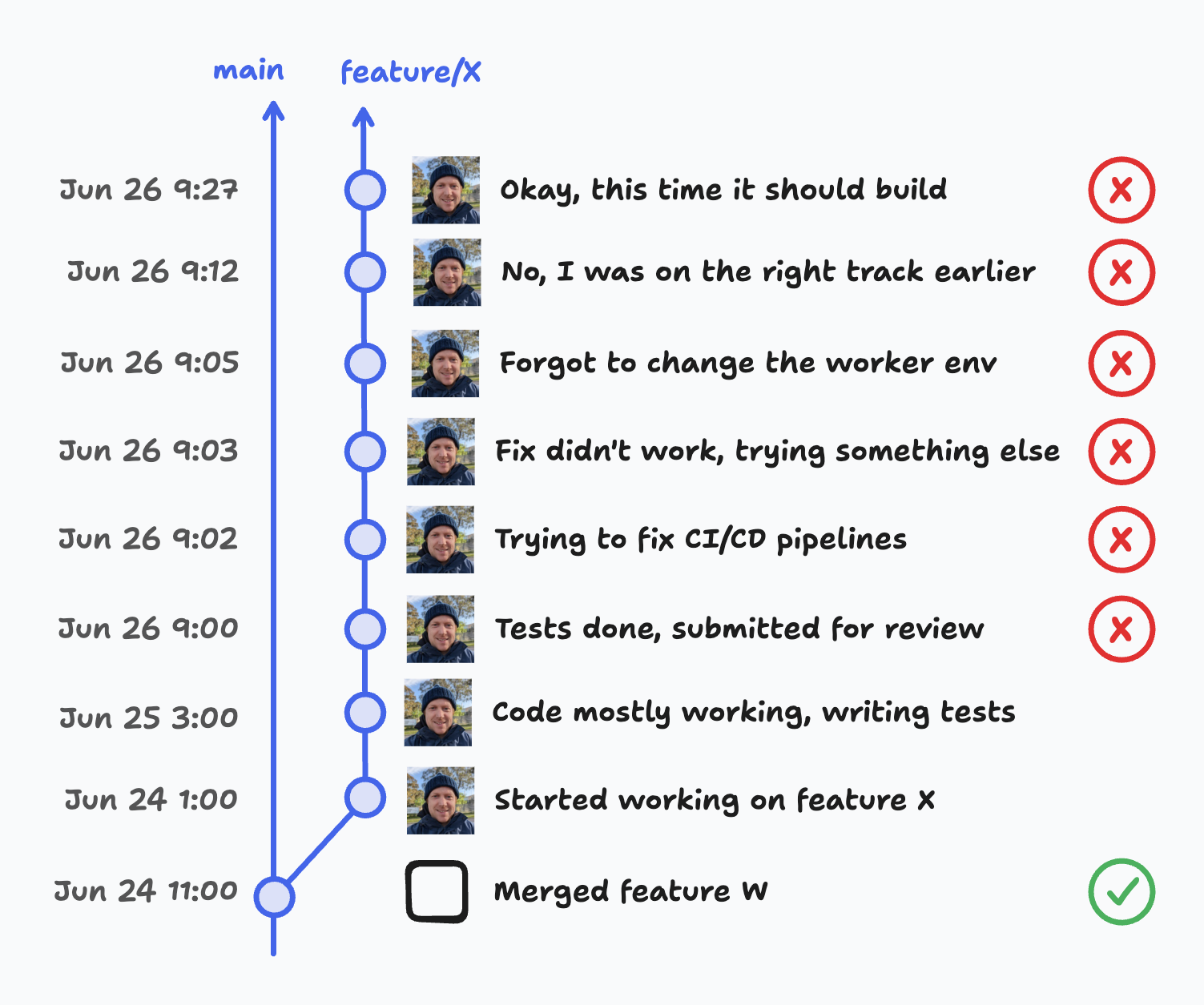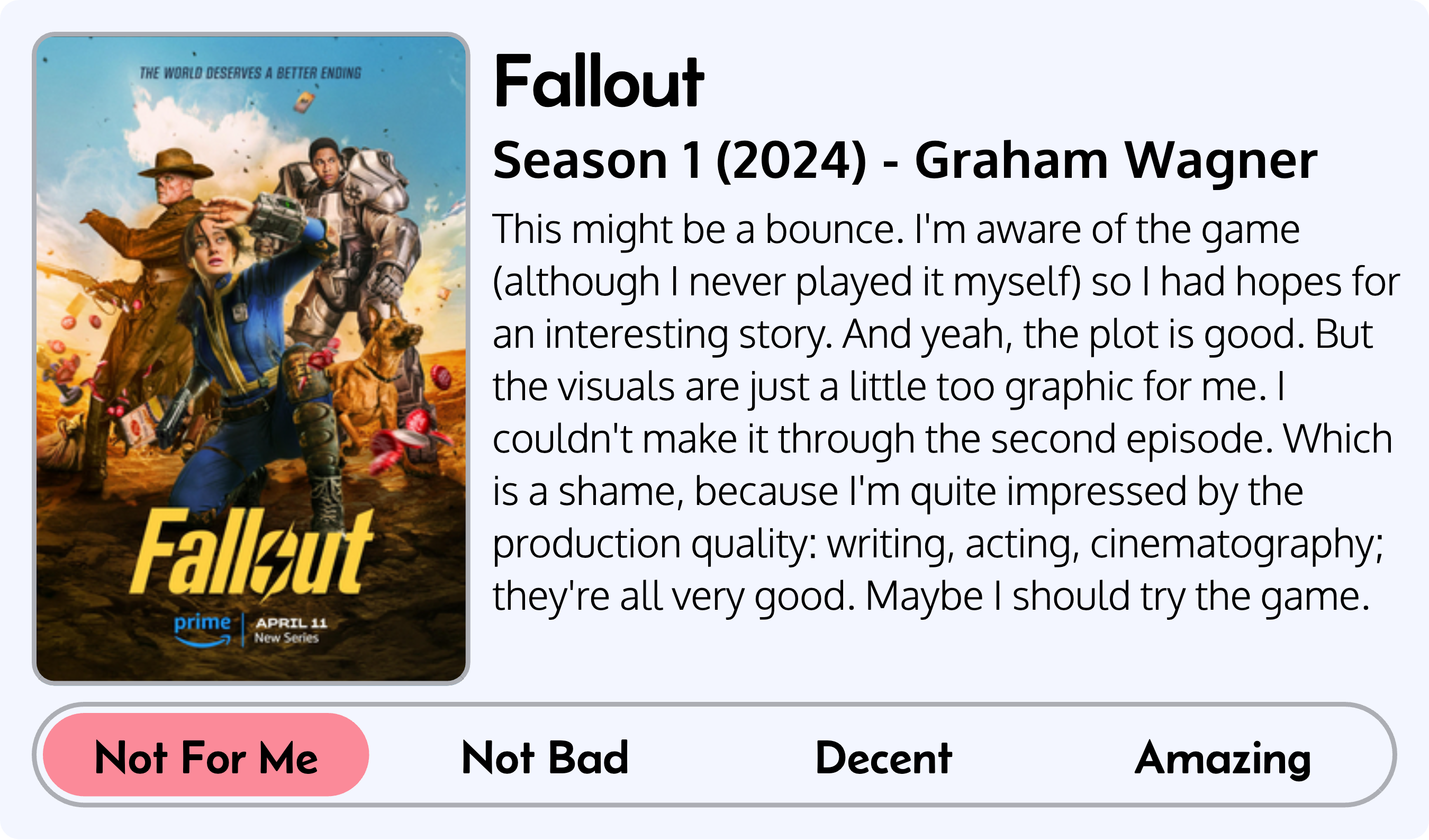-
Last night, I setup a Linode server to try out Forgejo. The setup went smoothly, and I managed to get Forgejo up and running, but the setup is a little expensive: around ~$18.00 AUD for a 2 GB server with 50 GB storage. So I’m going to try out Hetzner. I should, in theory, be able to get two servers — one for the frontend, and one as a CI/CD worker — both with twice as much RAM, plus a 50 GB volume for around ~$17.00 AUD.
The only downside is that the servers are further away: Falkenstein, Germany; rather than Sydney (I can’t be the only one that wishes the speed of light was faster). We’ll see how much the latency’s going to annoy me.
-
Ok, going to try out Forgejo for self-hosting my code. Got through the hardest part, which was paying for a Linux VPS (with backups enabled) and I’ll start with some old repositories that I won’t feel bad loosing. But if it all works out, I’ll use it as my replacement for Github. Wish me luck. 🤞
-
I’m enjoying the special guests on Downstream… but I do miss Julia. I mean, I’m super happy for her career advancement which led to her departure, but she and Jason were a great podcasting duo. But it’s fine, the special guests are great too. Currently listening to the episode with Tim Goodman.
-
I wish more podcasters know what a double-ended podcast is. Having Zoom’s compression algorithm garble your most important point is not a great listening experience. If you’re just starting off, or if you have a guest, that I understand. But if you’ve been doing this for years as part of your job? 🫤
-
There are times where I wish Go had Python-like tuples, but I think the decision to keep them out of the language is a good one. I feel like it’s easy for people to overuse these types of tuples, instead of coming up with new dedicated types. Go isn’t completely immune from this — I’ve seen some functions returning slices of slices of strings — but it does try to encourage writing code with many different types, each one with a narrow use case. The fact that this is found both in the culture and in the language itself (e.g. anonymous structs) is a good thing.
-
A university text-book author walks into a bar. The punchline is left as an exercise for the reader.
-
A QA walks into a bar, crawls into a bar, flys into a bar; and orders: a beer, 2 beers, 0 beers, -1 beers, then walks out saying “Test complete.” Meanwhile, a software developer asked to do QA walks into a bar and says “I didn’t fall down walking in. Test complete.”
-
Ran into my old barista this morning. He made morning coffees at the station in the late 2010s, before Covid wiped his business out. I thought he’d headed back to New Zealand after that, but no he’s still around and doing quite well (just not morning coffees). Really great to see him again. ☕️
-
Spent the last week polishing up the tool I use that takes journal entries from a Day One export and adds them as blog posts to a Hugo site. That tool is now open source for anyone else who may want to do this. You can find a link to it here: day-one-to-hugo.
Also recorded a simple demo video on how to use it:
-
It would be nice for browsers to remember every close tab that’s been open for more than, say, a day. This can sit alongside the browser’s current history and closed tab group, which is more geared towards your recent browsing. But unlike those, this would maintain a long term history, recording every closed tab since the beginning of time. And it doesn’t even need to be the full back-stack: the last visited URL would be fine.
The day limit is important, as it provides a good hint that it’s a tab that I want to revist later. There’ve been many a time I’ve had a tab open for weeks, saying to myself that I’ll read or do something with it, only to close it later accidently or when I want a tidier browser workspace. If and when the time comes where I want to revisit it, it’s has fallen out of the history, and all I end up is regret for not making a bookmark.
I suppose I could get into the habit of bookmarking things when I close them, but that’ll just move the mess from the browser to Linkding. No, this is something that might work better in the browsers themselves.
-
So, walk up the hill, then it’s through the gate to get to the path. Piece of cake.
Oh… 🤔

-
Trying out a bit of an experiment. I’m going to start accenting a few posts here with a small image in the form of marginalia, similar to what Dave Winer does on Scripting News. We’ll start with a classic for this post: a “website under construction” sign (this won’t appear in the RSS feed, so click through to see it).

This has been something I’ve been thinking about trying for a while, and I’ll be honest, I have no idea how it’ll look here. In fact I’m a little nervous about this. Would it enhance the post in any way, or be the blogging equivalent of clip-art on a Powerpoint slide? Would it make the site look dated, or even work with the type of posts I write here? I personally like the ones that appear on Scripting News, but I do wonder if that’s because they’re more likely to sit beside comments about the status quo, rather than the “today I did this” or “struggling with that” posts I tend to write here (this unbalance of topics is an anxiety I have about this blog that’s best suited for another time).
I guess we’ll find out together. I’ll try them for a bit and see how I feel in, say, a month. If I don’t like them, or I find myself never adding them, then I’ll pull them down and consider the experiment complete. Hopefully by then I’d have some answers.
-
Really enjoyed the conversation between Sam Harris and George Saunders. I’ve not read anything from Saunders, but they had quite an insightful discussion about writing and culture (and a hint of politics) that it might be worth looking at some of his fiction. 🎙️
-
Almost didn’t make it to the gym this evening. Glad I had a change of heart. Also glad that it came while the gym was still open.
(I say “change of heart”, as if the decision was made in the abstract. But it was the bad, guilty vibes that actually drove me to go.)
-
Gave the sample Storytime episode for my train line a try, and it’s not for me. Aside from being something not available wherever I get my other podcasts, the sample was really overproduced, with backing audio and cheesey sound effects. Not a fan of those sorts of podcasts.
-
The nature of AWS is that, even with things like ChatGTP, there are still traps laying about for those poor souls that don’t know what they don’t know. For example: did you know that you cannot immediately delete a secret value? You can only “schedule” it to be deleted at a future date that’s no earlier than 7 days from now. The secret won’t show up in the console, but you can’t use the same secret ID until it’s actually gone.
So good luck recovering from any mistakes you’ve made creating a secret via the AWS console instead of using Cloud Formation, like I did today. I guess some things’ll never change.
-
Been working on a Cloud Formation stack that defines IAM resources: roles, policies, profiles, etc. I can do a little bit already, like change policy documents, but writing this all from scratch is beyond me. ChatGPT has been a great help here. Would’ve been bothering my coworkers all day otherwise.
-
Code merged and artefacts prepared. Now to deploy it on brand spanking new infrastructure.
-
So, this is how my morning went.

Apologies to my reviewers for all the notification emails they’re receiving during this battle with the CI/CD build.
-
Might be the only way I’ll learn another language is I put the spoken training audio to music, preferably something that can pass as a entry to Eurovision.
-
Linux administration is quite fun. I don’t usually get an opportunity to do it as part of my day-to-day, so it’s always a joy having a task that involves SSH and interacting with a shell. 🐧

-
📺 Fallout: Season 1 (2024)

-
👨💻 New post on Linux over at Coding Bits: Packaging Services With Systemd
-
More Tools For Blogging Tool
Spent the last week working on Blogging Tool. I want to get as much done as a I can before motivation begins to wain, and it begins languishing like every other project I’ve worked on. Not sure I can stop that, but I think I can get the big ticket items in there so it’ll be useful to me while I start work on something else. I do have plans for some new tools for Blogging Tool: making it easier to make Lightbox Gallery was just the start. Continue reading →
-
Oof! These mornings have been really cold this last week. Had to bring out my wool and possum fur gloves for the walk to the cafe in 0.5°C weather.